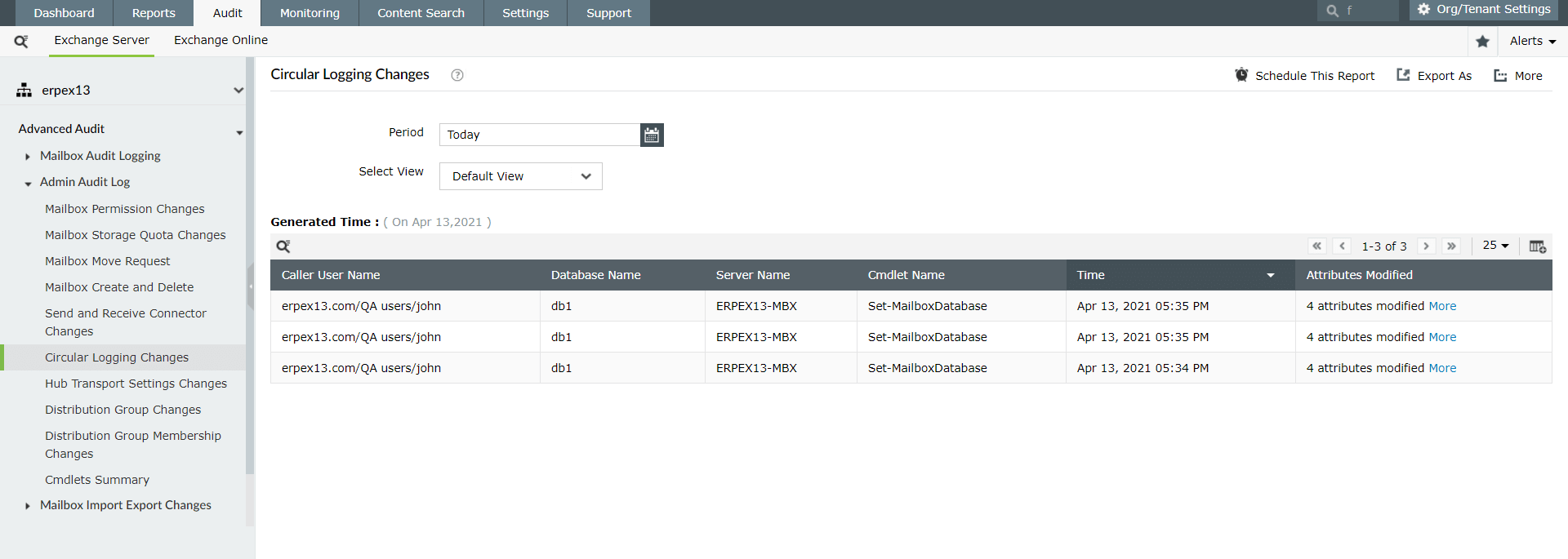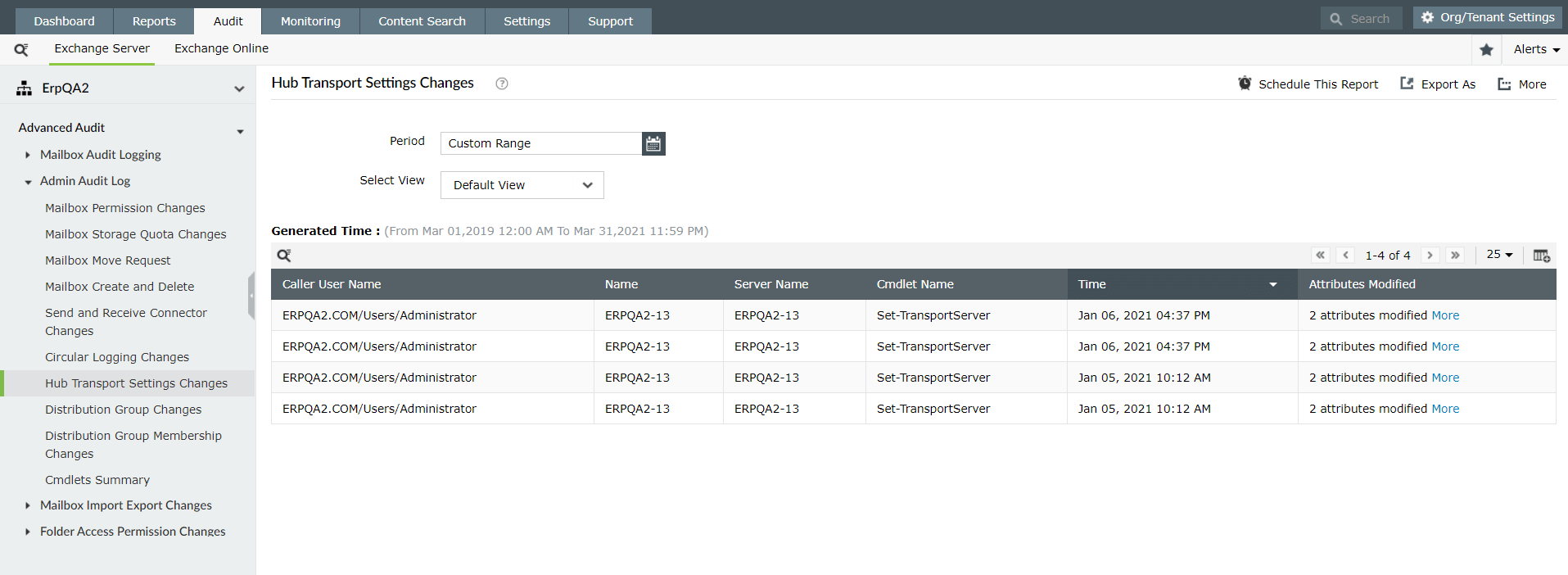- Free Edition
- Quick Links
- Exchange Mailbox Reports
- Mailbox Size Reports
- Mailbox Properties Reports
- Mailbox Status Reports
- Mailbox Permission Reports
- Mailbox Content Reports
- Mailbox Logon by Users
- Inactive Mailboxes Reports
- Mailbox Enabled Users
- Office 365 Mailbox Reports
- Room Mailbox Reports
- Shared Mailbox Reports
- Exchange Mailbox Permissions
- Shared Mailbox Permissions
- Calendar Permission Reports
- Export Mailbox Permissions Reports
- Export Mailbox Size Reports
- Export Exchange Mailbox Reports
- Export Public Folder Lists More..
- Exchange Server Monitoring
- Client Access Server Health
- Exchange Server Monitoring Tool
- Exchange Server Monitoring Reports
- Exchange Service Health Monitoring
- DAG Monitoring Reports
- Connectivity Monitoring Reports
- Mail Flow Health Monitoring
- Exchange Database Monitoring
- Storage Monitoring Reports
- Email Queue Monitoring
- Replication Health Monitoring More..
- Exchange Audit Reports
- Exchange Server Auditing
- Exchange Server Auditing and Alerting
- Exchange Server Compliance Reporting
- Exchange Audit and Compliance Tool
- Exchange Admin Audit Logging
- Non-Owner Mailbox
Logon Reports - Mailbox Permission Changes Reports
- Mailbox Property Changes Reports
- Exchange Database Changes Reports
- Server Configuration Changes Reports
- Exchange Mailbox Audit Logging More..
- Exchange Traffic Reports
- Exchange Office 365 Reports
- Other Reports
- Mailbox Content Search
- Skype for Business server reporting
- Outlook Web Access Reports
- ActiveSync Reports
- Mailbox and Public Store Reports
- Distribution Lists Report
- Server Storage Tracking Reports
- Public Folder Reports
- Public Folder Content Report
- Email Non-Delivery Reports
- Retention Policy Reports
- Email Non Delivery Reports More..
- Exchange Migration
- Resources
- Related Products
- ADManager Plus Active Directory Management & Reporting
- ADAudit Plus Hybrid AD, cloud, and file auditing and security
- ADSelfService Plus Identity security with MFA, SSO, and SSPR
- EventLog Analyzer Real-time Log Analysis & Reporting
- M365 Manager Plus Microsoft 365 Management & Reporting Tool
- SharePoint Manager Plus SharePoint Reporting and Auditing
- DataSecurity Plus File server auditing & data discovery
- RecoveryManager Plus Enterprise backup and recovery tool
- AD360 Integrated Identity & Access Management
- Log360 Comprehensive SIEM and UEBA
- AD Free Tool Active Directory Free Tool
Exchange Reporter Plus tracks, audits, and generates reports on the changes made to the servers in your Exchange environment. These reports on server configuration changes ensure that the administration of your Exchange environment is straightforward and effortless. The reports under the server configuration changes category include:
Circular logging changes report
- Contains detailed information on the circular logging setting of your databases.
- Lists database, server, and cmdlet names; the name of the user who ran the cmdlet; the time of execution; and the attributes modified.

Hub transport settings changes report
- Helps the administrator monitor changes to hub transport settings in the Exchange Servers 2010, 2013, and 2016.
- Lists the caller and domain user names, the modified attribute, the new and old values, the property where the change was made, and remarks.

Send and receive connector changes report
- Presents the consolidated results of auditing send and receive connector changes in your Exchange environment.
- Lists who is making changes to the send and receive connectors, the names of the connector and the server, the cmdlet used, and the attributes modified.

Report on and audit Exchange Online using Exchange Reporter Plus.
In an Exchange environment that has multiple administrators, keeping track of changes made to server configuration by each administrator, or just any change, is a difficult task. Not if you have Exchange Reporter Plus, which provides granular reports on all configuration changes to Exchange Servers 2010, 2013, and 2016. These reports enable admins troubleshoot various issues, such as message routing problems, easily. Documenting the changes also helps adhere to policy compliance requirements. Moreover, admins can configure these reports to be emailed to them at specified time intervals and in any format, including PDF, CSV, XLS, or HTML.









